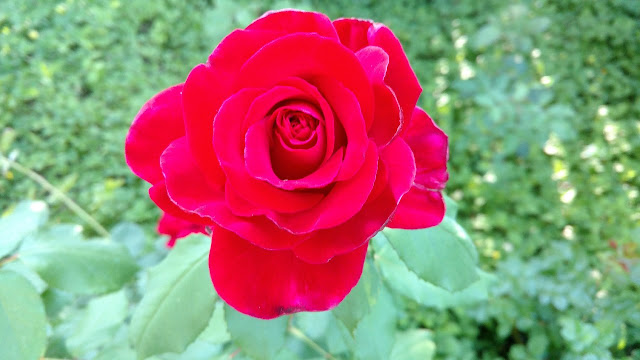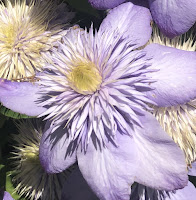
Podcast shares tips on best roses to grow for bouquets

|
|
Olympiad is one of the best red roses to grow for use in bouquets. (Photo:
Debbie Arrington)
|
The rose is overwhelmingly America’s pick. Four out of five people say roses are their favorite flowers. Roses make up 84% of all purchased cut flowers – and seven out of every 10 of those are red.
But how do you grow bouquet-worthy blooms at home? Which varieties make the best cut roses? And how do you get them to last longer in the vase?
These are some of the rosy topics discussed by yours truly, master rosarian Debbie Arrington, during this week’s “Garden Basics with Farmer Fred” podcast, hosted by Farmer Fred Hoffman.
“Roses are beginning to put on a show throughout most of rose-growing country, especially USDA Zones six through 10,” says Hoffman. “What are the best roses to grow that not only look nice in the garden, but do especially well as cut flowers in the house? What are the roses that have outstanding shape and color, but also can last a long time in a vase, and aren’t a hassle when it comes to dealing with their prickles, in other words, ones that aren’t a thorny mess?”
Debbie suggests more than two dozen varieties that fit that description plus offers tips for keeping those roses looking good, on or off the bush.
Among the best long-stemmed red roses to grow in your own garden: Olympiad, Mister Lincoln and Veterans’ Honor.
Prefer pink? Consider Pink Promise, Queen Elizabeth, Friendship, Gentle Giant and Hot Princess.
Want longer stems? Cut lower on the stem (farther away from the bud) – even when deadheading (removing spent blooms). Hybrid tea roses tend to grow to a certain height and stem length. By always cutting long stems (instead of snipping off spent flowers near their base), the bush will continue to grow new stems the same length.
Listen in and learn more: https://gardenbasics.net/episode/195-the-best-roses-for-cut-flowers-786 .
-------------------------------------------

Comments
0 comments have been posted.Sacramento Digs Gardening to your inbox.
Food in My Back Yard Series
April 1: Don't be fooled by these garden myths
March 25: Fertilizer tips: How to 'feed' your vegetables for healthy growth
March 18: Time to give vegetable seedlings some more space
March 11: Ways to win the fight against weeds
March 4: Potatoes from the garden
Feb. 25: Plant a fruit tree now -- for later
Feb. 18: How to squeeze more food into less space
Feb. 11: When to plant? Consider staggering your transplants
Feb. 4: Starting in seed starting
Sites We Like
Garden Checklist for week of March 30
Your garden doesn’t mind April showers. Get busy now to enjoy those future flowers.
* Get ready to swing into action in the vegetable garden. As nights warm up over 50 degrees, start setting out tomato, pepper and eggplant transplants.
* From seed, plant beans, beets, cantaloupes, carrots, corn, cucumbers, melons, pumpkins, radishes and squash. (Soak beet seeds overnight in water for better germination,)
* Plant onion sets.
* In the flower garden, plant seeds for asters, cosmos, celosia, marigolds, salvia, sunflowers and zinnias.
* Transplant petunias, zinnias, geraniums and other summer bloomers.
* Plant perennials and dahlia tubers for summer bloom.
* Transplant lettuce and cabbage seedlings.
* April is the last chance to plant citrus trees such as dwarf orange, lemon and kumquat. These trees also look good in landscaping and provide fresh fruit in winter.
* Smell orange blossoms? Feed citrus trees with a low dose of balanced fertilizer (such as 10-10-10) during bloom to help set fruit. Keep an eye out for ants.
* Apply slow-release fertilizer to the lawn.